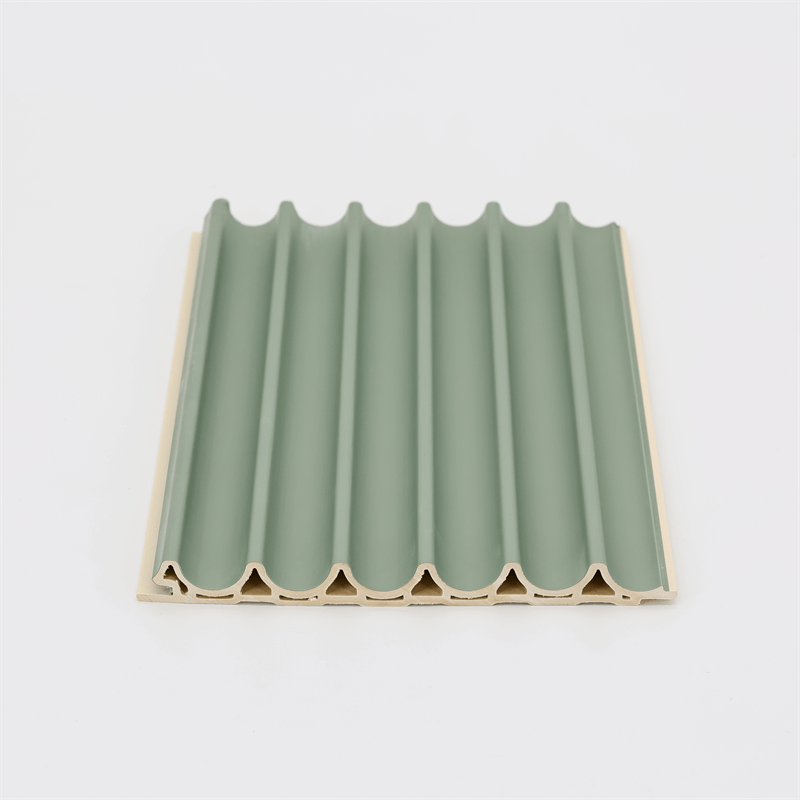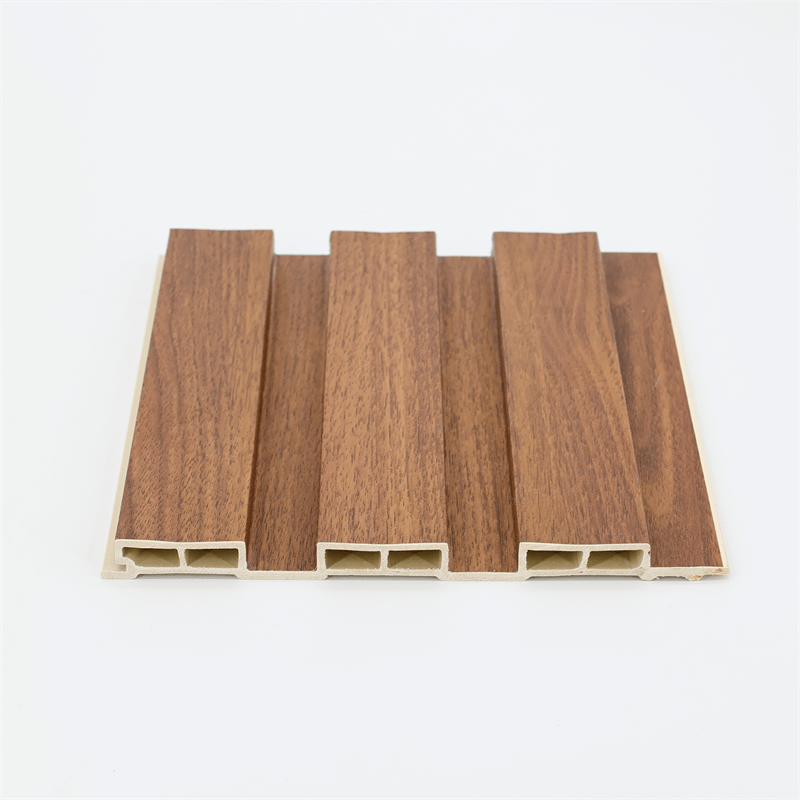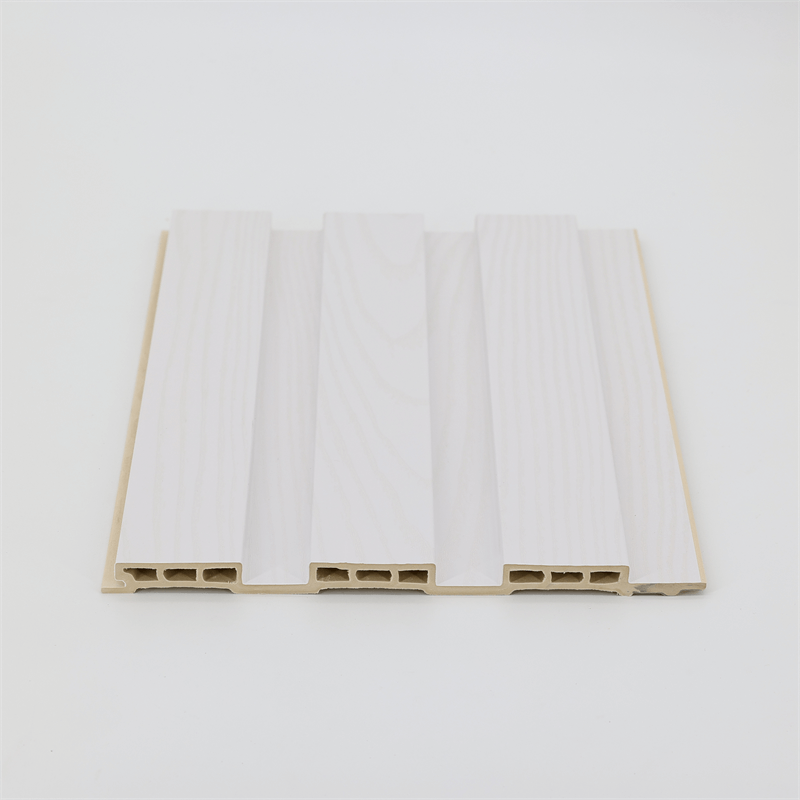In the realm of interior design and construction, wall panels play a significant role in enhancing the aesthetics and longevity of a space.
However, one common challenge faced by many wall materials is the tendency to fade or discolor over time due to exposure to sunlight, moisture, or environmental factors.
This essay delves into the resistance of WPC (Wood-Plastic Composite) wall panels to fading and discoloration,
examining the reasons behind their ability to maintain their original appearance and exploring the benefits they offer in terms of durability, visual appeal, and long-term performance.
I. Understanding the Factors Influencing Fading and Discoloration:
- UV Radiation: Sunlight, particularly the ultraviolet (UV) radiation component, is a primary cause of fading and discoloration in wall materials. The exposure to UV rays breaks down the chemical bonds in pigments and dyes, leading to color degradation and loss of vibrancy.
- Moisture and Humidity: Moisture and high humidity levels can accelerate the fading and discoloration process. Water can penetrate the surface of wall materials, causing chemical reactions that alter the color or lead to the growth of mold and mildew.
- Environmental Pollutants: Pollutants present in the surrounding environment, such as pollutants from industrial emissions, vehicle exhaust, or chemicals, can also contribute to the fading and discoloration of wall materials. These pollutants can interact with the surface of the material, causing chemical reactions that affect the color and appearance.
II. The Benefits of WPC Wall Panels in Fading and Discoloration Resistance:
- UV Stabilizers: WPC wall panels are typically manufactured with the inclusion of UV stabilizers. These additives are designed to absorb and dissipate the harmful UV radiation, preventing it from reaching the underlying pigment or dye. As a result, the color stability of the panels is significantly enhanced, and the risk of fading or discoloration is minimized.
- Moisture Resistance: WPC wall panels are inherently moisture-resistant due to their composition, which includes a blend of wood fibers and thermoplastic polymers. This resistance to moisture helps to prevent water absorption and the subsequent chemical reactions that can lead to discoloration or the growth of mold and mildew.
III. Durability and Long-Term Performance:
- Color Consistency: WPC wall panels are manufactured using advanced technology and processes, ensuring uniform dispersion of pigments and dyes throughout the material. This results in consistent coloration and reduces the risk of uneven fading or discoloration over time.
- Surface Protection: Many WPC wall panels are coated with protective layers that offer additional resistance to fading and discoloration. These protective coatings act as a barrier, shielding the panels from the damaging effects of UV radiation, moisture, and environmental pollutants.
IV. Maintenance and Care:
- Low Maintenance Requirements: WPC wall panels require minimal maintenance to retain their original appearance. Regular cleaning with mild soap and water is usually sufficient to remove dust, dirt, or surface stains. Unlike materials that may require regular painting or sealing, WPC panels offer a hassle-free maintenance solution.
- Longevity: The resistance of WPC wall panels to fading and discoloration contributes to their overall longevity. With proper care and maintenance, these panels can maintain their visual appeal for an extended period, reducing the need for frequent replacements or repairs.
WPC wall panels offer a significant advantage in terms of resistance to fading and discoloration when compared to traditional wall materials.

The inclusion of UV stabilizers, inherent moisture resistance, and protective coatings contribute to their ability to maintain their original appearance and color consistency over time.
These features make WPC wall panels an attractive choice for both residential and commercial applications, as they offer durability, visual appeal, and long-term performance.
By choosing WPC wall panels, designers and builders can create spaces that retain their aesthetic appeal, even in the face of exposure to sunlight, moisture, and environmental pollutants.
With their ability to resist fading and discoloration, WPC wall panels provide a reliable and sustainable solution for achieving lasting beauty and quality in interior design and construction projects.
In conclusion, the resistance of WPC wall panels to fading and discoloration makes them a highly desirable choice for enhancing the longevity and visual appeal of interior spaces.
Their ability to withstand the damaging effects of UV radiation, moisture, and environmental pollutants sets them apart from traditional wall materials.
The inclusion of UV stabilizers and protective coatings in the manufacturing process of WPC wall panels ensures that they maintain their color consistency and original appearance over time.
This resistance to fading and discoloration contributes to the durability and longevity of these panels, reducing the need for frequent maintenance, repairs, or replacements.
Furthermore, the inherent moisture resistance of WPC wall panels prevents water absorption and the growth of mold and mildew, which can also lead to discoloration and degradation of the material.
This moisture resistance, combined with their UV resistance, makes WPC wall panels particularly suitable for areas prone to high humidity or exposure to sunlight.
The low maintenance requirements of WPC wall panels further enhance their appeal, as they eliminate the need for regular painting or sealing.
With simple cleaning using mild soap and water, the panels can retain their original vibrancy and beauty.
By choosing WPC wall panels, designers, architects, and homeowners can create interior spaces that not only look stunning but also withstand the test of time.
The resistance to fading and discoloration ensures that the aesthetic value of the panels remains intact, contributing to the overall appeal and value of the space.
In summary, WPC wall panels offer a reliable and effective solution to combat the challenges of fading and discoloration faced by traditional wall materials.
Their resistance to UV radiation, moisture, and environmental pollutants, coupled with their durability and low maintenance requirements, make them an excellent choice for achieving long-lasting, visually appealing interior designs.
With WPC wall panels, spaces can maintain their beauty and vibrancy, creating a welcoming and attractive environment for years to come.


